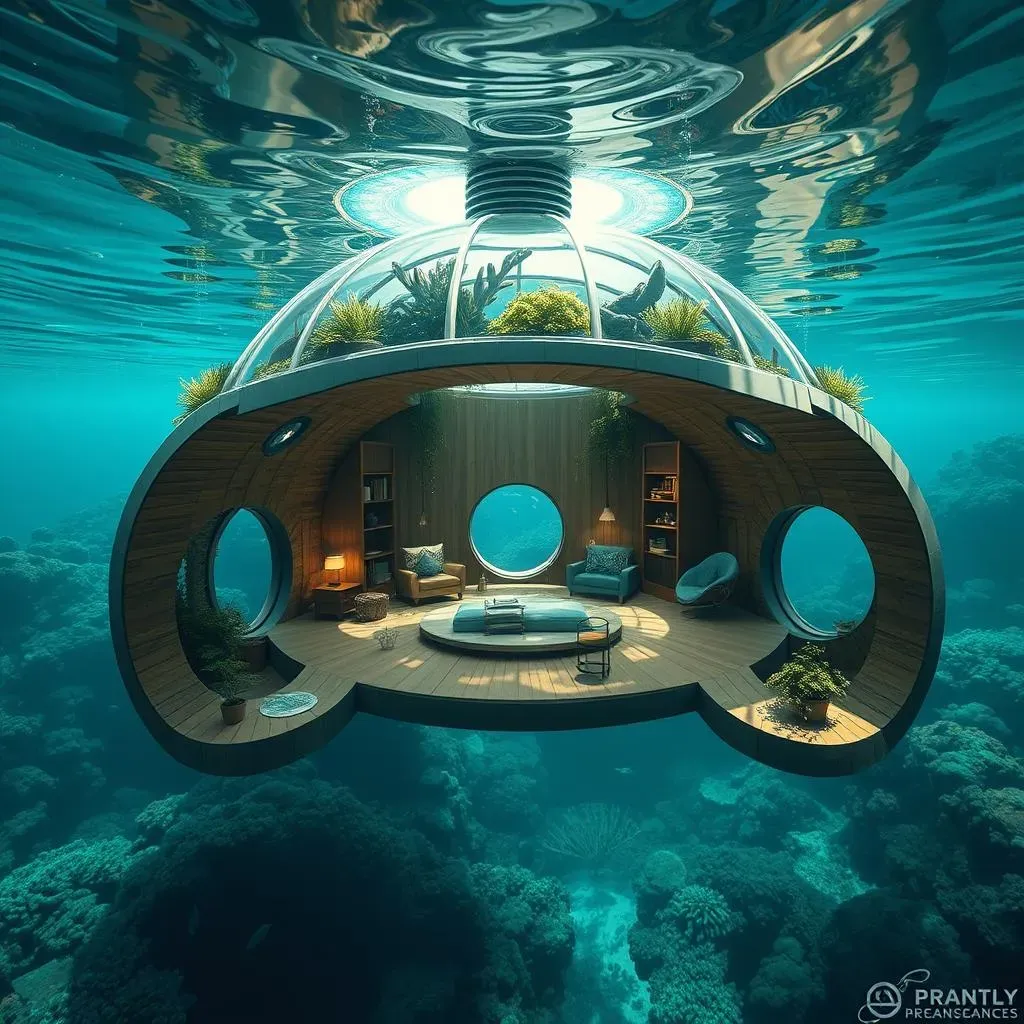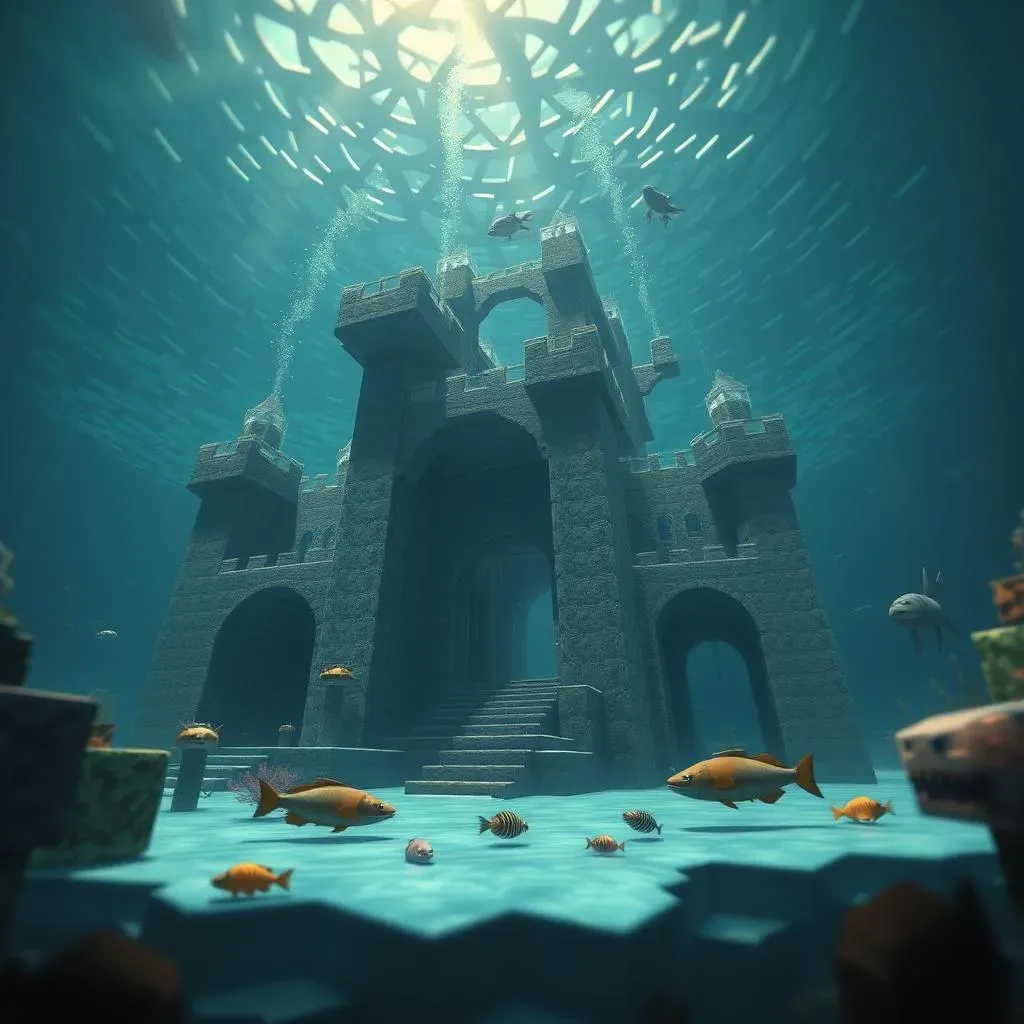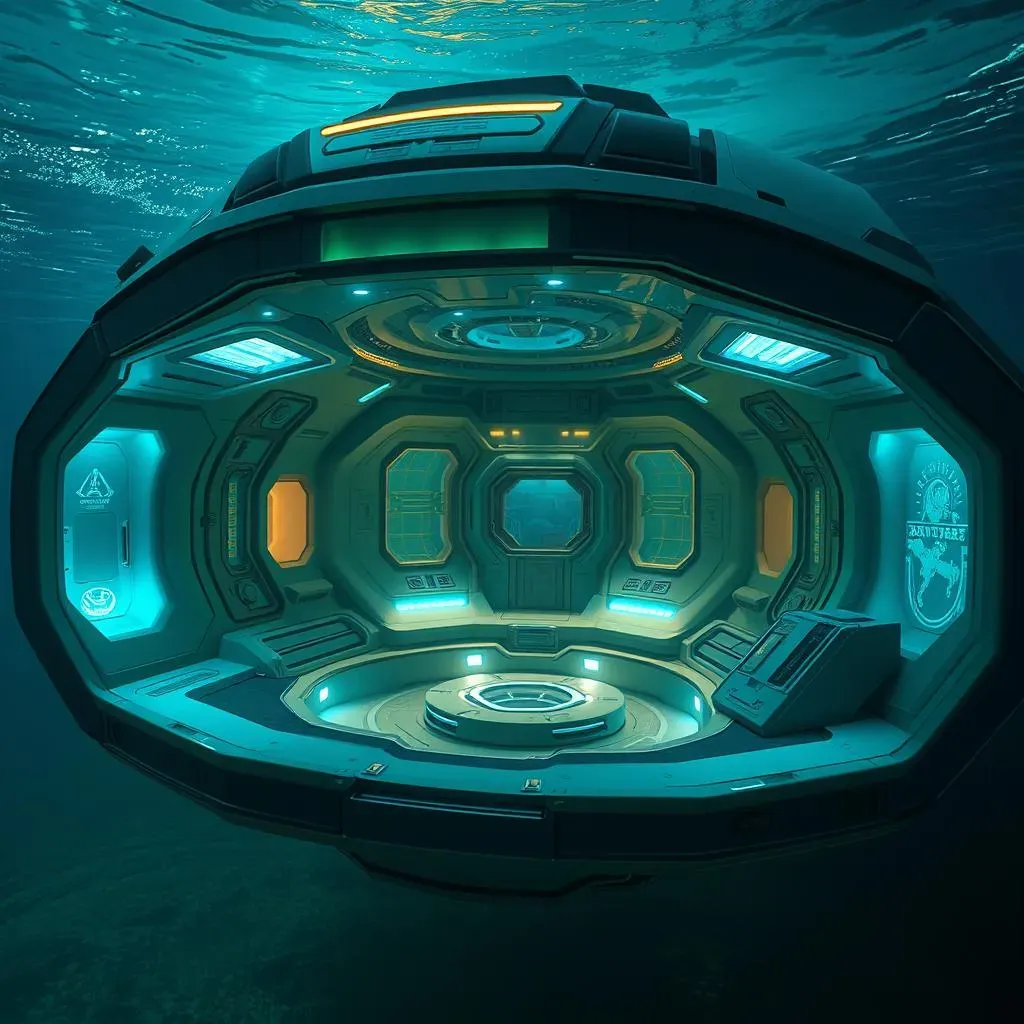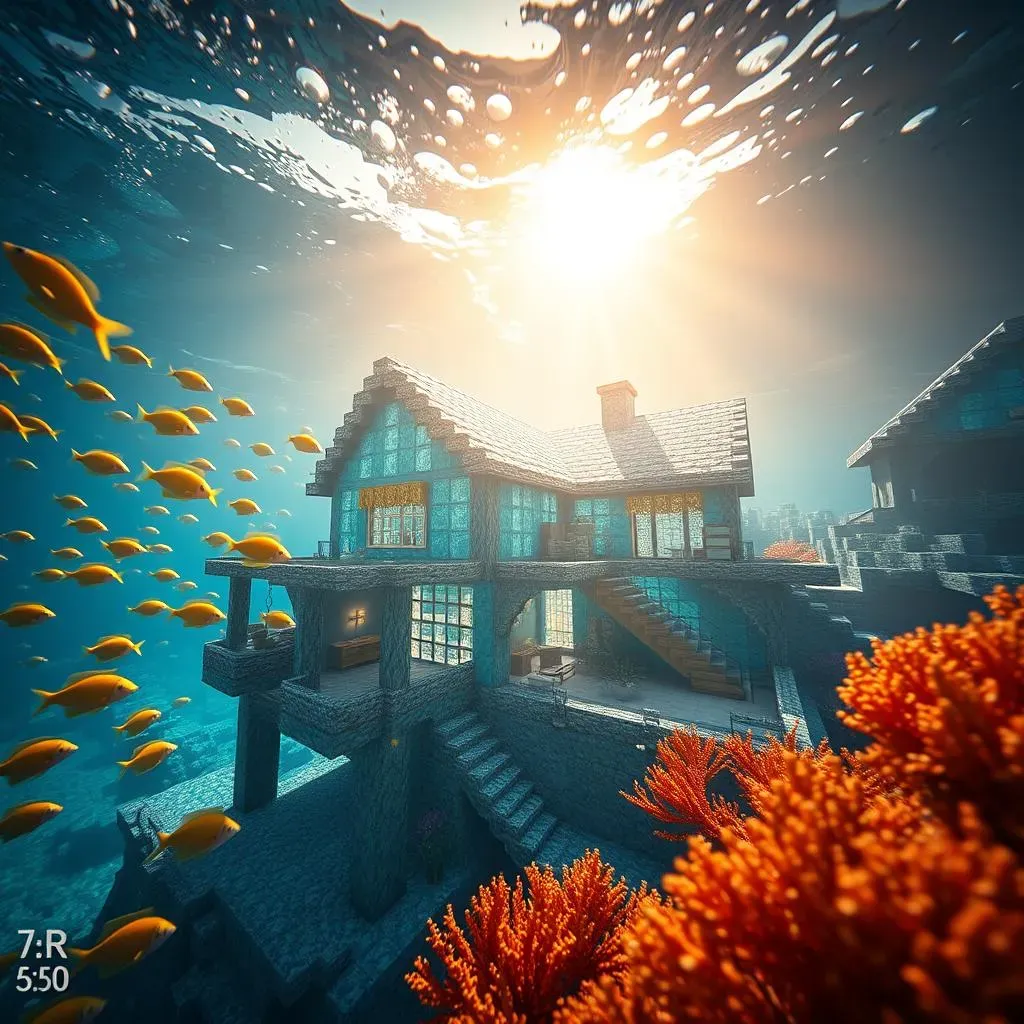Table of Contents
Ever dreamed of building a secret underwater base in Minecraft, a hidden sanctuary where you're safe from creepers and other nasty mobs? This ultimate guide to building a "minecraft underwater house survival shelter" will turn that dream into reality! We'll take you step-by-step, from choosing the perfect location and designing your dream underwater dwelling to mastering the tricky techniques needed to survive beneath the waves. Learn how to manage air, light, and defense against those pesky underwater foes. We'll even cover advanced techniques like underwater farming and base expansion, transforming your humble shelter into a thriving underwater metropolis. Get ready to explore ingenious building methods, overcome unique challenges, and create an awe-inspiring underwater home that's both stylish and secure. Whether you're a seasoned Minecraft veteran or a newbie just starting out, this guide has everything you need to conquer the depths and build the ultimate underwater survival haven. So, grab your pickaxe, and let’s dive in!
Planning Your Underwater Base: Location, Design, and Resources

Planning Your Underwater Base: Location, Design, and Resources
Choosing the Perfect Spot
First things first: location, location, location! You wouldn't build a beach house in the desert, right? For your underwater base, consider these factors. A shallow reef offers easy access and beautiful coral, perfect for a beginner's coral reef house. Deeper waters offer more seclusion and challenge but demand more preparation. Think about proximity to resources like sand (for glass) and clay (for bricks), saving you valuable time and energy. A nearby ocean monument could even become part of your base, providing extra resources and a unique aesthetic! Check out this guide on building a base near an ocean monument for inspiration!
Don't forget about the light! You'll need plenty of it to keep those pesky mobs away. Areas with natural light sources, like those near the surface or close to underwater caves, are ideal. Also, consider the landscape. A natural formation, such as a small underwater cave, could provide a fantastic foundation, saving you considerable building time and materials. Alternatively, a flat, open area gives you maximum design freedom.
Location Type | Pros | Cons |
|---|---|---|
Shallow Reef | Easy access, natural beauty | Less seclusion, potentially less resources nearby |
Deep Ocean | More seclusion, challenge, potential for unique designs | Difficult access, requires more preparation |
Designing Your Dream Underwater Home
Now for the fun part: designing your underwater palace! Start with a basic blueprint. Even a simple simple tutorial can give you a great starting point. Sketch out your layout on paper or in a separate creative world. Consider the size and shape of your base. A small, cozy shelter is easier to build and maintain, while a larger base offers more space for expansion and storage. Think about the different rooms you'll need: a crafting area, a sleeping chamber, a storage room, and maybe even a secret underwater garden! For inspiration, browse some amazing affordable designs.
Remember, your design should be practical as well as aesthetically pleasing. Think about how you'll navigate the interior. Will you use stairs, ladders, or even an elevator? How will you manage water flow and air pockets? These are crucial considerations that will greatly impact your overall building experience. It's also fun to think about the style of your base. Do you want a sleek, modern look, or a more rustic, natural design? Perhaps a blend of both? For unique ideas, explore these interior design options.
- Basic shape and size
- Room layout and function
- Interior navigation
- Water management
- Aesthetic style
Gathering Your Resources
Before you start hammering away at blocks, you'll need to gather the necessary resources. This involves a lot of mining and foraging—it's a great way to level up your skills! You’ll need cobblestone, glass (lots of it!), wood, and other essential building materials. Don't forget about essential items like torches for lighting and chests for storage. Depending on your design, you might also need sand for glass panes, clay for bricks, and even prismarine for a more aquatic feel. Having a plan beforehand will make gathering much more efficient. Check out the blueprints for a small base to get started.
Consider using mods to streamline your resource gathering. Many mods offer enhanced mining capabilities or automated resource collection, which can be incredibly useful for a large-scale underwater project. Remember to choose mods that are compatible with your Minecraft version and server settings. Once you've gathered enough resources, you'll be ready to start the actual construction. This is where the real fun begins! Remember to factor in extra materials for unexpected setbacks or design changes. It's always better to have too much than not enough!
Building Your Underwater Fortress: Techniques and Challenges

Building Your Underwater Fortress: Techniques and Challenges
Laying the Foundation: Building Underwater
Okay, so you've got your amazing design and all your materials. Now comes the actual building part, which can be tricky underwater. You'll find that your movement is slower, and mining takes longer. Consider using enchantments like Depth Strider on your boots for faster movement, and Aqua Affinity on your pickaxe for speedier mining. Getting that first layer down is key! Start with a strong, stable base, using materials that can withstand water pressure. Cobblestone is a good all-around choice, but for a more visually appealing base, consider using prismarine or dark prismarine. These will give your base an authentic underwater look. For extra tips and tricks, check out our guide on building tips.
One clever technique is to build your structure above water, then carefully lower it into position. This "drop-in" method can be useful for larger, more complex designs. Remember, you can use sand or gravel as temporary scaffolding to help you lower the structure without it breaking apart. This also allows you to hollow out the interior using gravity blocks like sand and gravel. If you're feeling adventurous, you can even attempt a more ambitious project like this epic build!
Building Material | Pros | Cons |
|---|---|---|
Cobblestone | Durable, readily available | Less visually appealing |
Prismarine | Visually appealing, underwater aesthetic | Requires more effort to obtain |
Managing Water and Air: Essential Considerations
Water is your biggest enemy when building underwater, so water management is crucial. Using sponges to soak up water is a classic method, but it's slow and expensive. A better option, especially for larger projects, is to use conduits. These powerful blocks can help you clear out massive amounts of water quickly and efficiently. Remember to place your conduits strategically, taking into account the water flow and the overall layout of your base. It's a good idea to plan your conduit placement before you start building your walls. For alternative ideas on air pockets, check out our guide on air pocket ideas for some inspiration.
Creating air pockets is equally important for survival. You'll need these spaces to breathe and to store your essential items without them getting wet! There are many ways to do this, from simply creating enclosed spaces to using glass panes or other non-solid blocks to let in light while keeping the water out. A well-designed airlock system is crucial for preventing unwanted water from entering your base. Think about using pressure plates or other mechanisms to create efficient and safe entry and exit points. For a more advanced base, you might even want to consider incorporating a flood control system!
- Use sponges strategically to remove water.
- Plan conduit placement carefully for efficient water removal.
- Design effective airlocks to prevent flooding.
- Create enclosed air pockets for breathing and storage.
Structural Integrity and Defense: Building a Fortress, Not a Flop House
Your underwater base needs to be more than just pretty; it needs to be strong and secure. Use sturdy blocks like cobblestone, stone bricks, or even obsidian for the main structure. Avoid blocks that are easily broken or that can be mined quickly by hostile mobs. Think about the overall design of your base, ensuring that it's able to withstand water pressure and attacks from underwater creatures. Adding extra support beams or pillars can help reinforce the structure, especially in larger builds. For experienced players who are up for a challenge, check out the advanced builds.
Defense is key for survival, so consider building a strong outer wall or even a moat around your base to deter unwanted visitors. Remember, lighting plays a vital role in keeping hostile mobs at bay. Place torches or other light sources around the exterior and interior of your base to prevent mob spawning. Also, consider using pressure plates or other traps to protect your base from intruders. Remember, a well-defended base is a happy base! For multiplayer survival, consider these multiplayer friendly designs.
Essential Features for Underwater Survival: Air, Light, and Defense

Essential Features for Underwater Survival: Air, Light, and Defense
Air, Light, and Defense: The Holy Trinity of Underwater Survival
So, you've got your underwater base structure—fantastic! Now, let's talk about the essentials that will keep you alive and kicking (or swimming, rather) in your watery kingdom. First up: air. We're not talking about some fancy air conditioner here; you need a reliable supply of breathable air, and that means carefully planned air pockets. Remember those airlocks we discussed? They're not just for keeping the water out; they’re your lifeline to fresh air. Consider incorporating multiple air pockets throughout your base for safety and convenience. For more ideas, check out this guide on creating air pockets.
Next, light is your best friend—and your enemy's worst nightmare. Hostile mobs simply can't spawn in well-lit areas, so proper lighting is crucial for keeping your base secure. Torches are the classic option, but they can be expensive and take up space. Sea lanterns are a stylish alternative, offering a gentler, more atmospheric glow. Experiment with different light sources to find the perfect balance between aesthetics and functionality. Don't forget to light up the outside of your base, too; you wouldn't want any unwelcome visitors sneaking up on you.
- Create multiple air pockets for safety and convenience.
- Use sea lanterns for a stylish and effective lighting solution.
- Light both the interior and exterior of your base.
Finally, and perhaps most importantly, defense. You’ve worked hard to build your underwater paradise, and you don't want to lose it to some grumpy squid or a pack of aggressive guardians. Reinforce your base structure with strong blocks, add traps to deter intruders, and consider building a protective outer wall. If you're feeling especially ambitious, you could even create a moat around your base. Remember those secret rooms? They're not just for fun; they're perfect for storing valuable items or creating escape routes in case of emergency.
Think of your underwater base as a well-fortified castle, not just a cozy cottage. The more effort you put into defense, the safer and more comfortable your underwater life will be. Regularly check your base for any signs of damage or weakness, and don't hesitate to upgrade your defenses as needed. Remember to use your resources wisely! For example, you can incorporate your base into a larger structure, such as an ocean base, to enhance its security and functionality.
Defense Method | Pros | Cons |
|---|---|---|
Reinforced Walls | Strong, reliable protection | Can be resource-intensive |
Traps | Deters intruders, can be deadly | Requires careful planning and placement |
Moat | Provides an extra layer of defense | Requires significant space and resources |
Advanced Underwater Living: Farming, Decoration, and Expansion

Advanced Underwater Living: Farming, Decoration, and Expansion
Underwater Farming: Growing Your Grub
Once your survival needs are met, it’s time to think about creature comforts! Underwater farming might sound crazy, but it's totally doable. You can grow kelp easily, providing a decent food source. For more variety, consider building a kelp farm near your base; it's a great way to produce sustainable food. For more advanced farming techniques, check out our guide on underwater farm design. You can also experiment with growing other crops in enclosed, well-lit areas, although this requires more effort and resource management.
Remember, successful underwater farming requires careful planning and attention to detail. You need a reliable source of light and water, and you need to protect your crops from hostile mobs. Consider using a fully enclosed system for maximum control over your environment. It's important to protect your farm from any flooding. Remember, a well-maintained farm is essential for long-term survival in your underwater base.
- Kelp is an easy-to-grow underwater crop.
- Enclosed farms offer better control over the environment.
- Protection from flooding is crucial.
Decorating Your Underwater Domain: Style and Function
Now for the fun part: decorating your underwater home! Don't just throw some blocks together; think about creating a cohesive and aesthetically pleasing design. Prismarine and sea lanterns are great for adding an aquatic theme, but don't be afraid to experiment with other materials to create a unique look. Consider adding custom furniture and decorations to personalize your space. For some creative ideas, check out our guide on underwater furniture crafting.
Remember, decoration isn't just about looks; it can also improve functionality. Strategic placement of lighting can enhance the ambiance and improve visibility, while well-placed storage chests can keep your inventory organized. Consider adding decorative elements that also serve a purpose. For example, a coral reef outside your windows can provide a beautiful view while also attracting fish, which can be used as a food source. For players seeking a unique aesthetic, try experimenting with a custom texture pack. Check out our guide on custom texture packs for some inspiration!
Decorative Element | Pros | Cons |
|---|---|---|
Prismarine | Underwater aesthetic, durable | Can be expensive to obtain |
Sea Lanterns | Bright, effective lighting | Can be expensive to obtain |
Expanding Your Underwater Kingdom: Growth and Innovation
Once your initial base is complete, it's time to think about expansion. This could involve adding new rooms, extending your base's footprint, or even building interconnected structures. Planning for expansion from the beginning is important, as it can save you time and resources in the long run. Consider the direction of expansion carefully, and ensure that it aligns with your overall design. For more advanced expansion tips, check out our guide on building for experienced players.
Expansion can also involve incorporating new technologies and features into your base. For example, you might add an automated farming system, a sophisticated lighting network, or a more robust defense system. The possibilities are endless! Remember, expansion is an ongoing process, so don't be afraid to experiment and try new things. For some inspiration, check out this time-lapse of an underwater base build.
